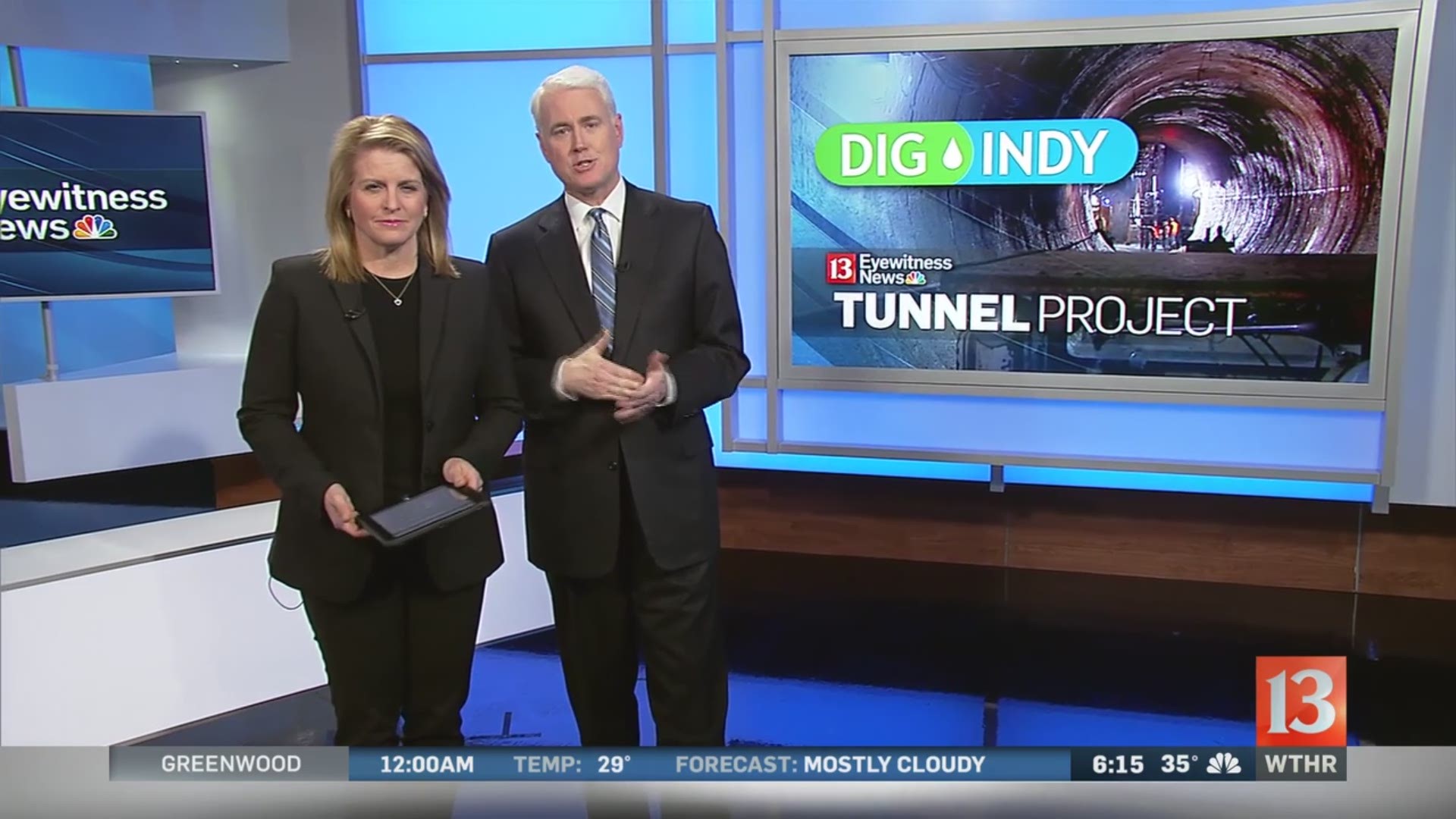INDIANAPOLIS (WTHR) - If you're heading out of downtown Indianapolis, you'll only get so far before hitting a major detour on the north side.
A major tunnel project has several streets blocked off.
We got a view most don't see, below ground, to show you the real work going on in this massive underground project.
There’s not much rush during rush hour at this part of Meridian St. To get to the bottom of what’s going on in this construction zone, you have to go down, way down, 250 feet below the surface.
Welcome to Deep Rock Tunnel, one of the largest public works projects in the city's history.
It's not as flashy or exciting as a stadium or an airport, and even though it's costing us nearly $2 billion, this one is easy to forget about. It's out of sight and out of mind.
“We are underground,” said project manager Mike Miller “We have been down here for about 6 years now constructing this project and we'll be going about another 7 years before we're complete.”
The project is ambitious.
The tunnel holds millions of dollars in high-tech drilling equipment and it has its own train to take workers from the launch shaft to the drill site.
And it's big. Really big. These tunnels are 18-feet tall and lined in concrete. Crews here have been digging through solid bedrock that is at least 300 million years old.
They're basically creating a reservoir in ancient limestone to solve a modern problem.
Right now, Indianapolis rivers and streams take in billions of gallons of water mixed with raw sewage each year. That's because the two share the same underground pipes, and when it rains, the city's sewage treatment plants can't handle the volume. It goes straight to the waterways.
The Deep Rock Tunnel system will store raw waste until water treatment plants can process it.
“On any given rain event, it can hold up to 270 million gallons. Over the course of the year, we'll collect over 6-billion gallons total,” Miller said.
So far, the project is on schedule.
It started in 2011 near the Southport water treatment plant, and the first tunnel ran east, then north, connecting with the Belmont plant between Harding St. and Kentucky Ave.
It's now pushing toward the state fairgrounds, where it will eventually have three more tunnels feeding into it, a man-made subterranean system that is growing by as much as 200 feet a day.
A large sewer line runs directly underneath 28th and Meridian, where workers are building a new sewer drop shaft to get raw sewage out of the main pipe and into the Deep Rock Tunnel.
“It's not fun,” Miller acknowledged of the delays created. “Many of the folks at Citizens commute up and down Meridian. I commute up and down Fall Creek, so we understand and we share in the pain, but it is a project that's necessary and will have huge environmental benefits when we're done.
The road to cleaner rivers will disrupt traffic near IUPUI next, then along Fall Creek Parkway and around the state fairgrounds in coming years.
The project should be done in 2025.
When Citizens started, there were 134 places where raw sewage was flowing into the waterways. That system had been in place for more than 100 years, and engineers say it takes time to close them off and divert all the wastewater to the deep rock tunnel.

